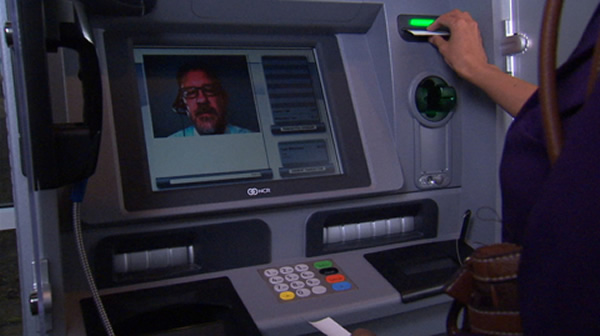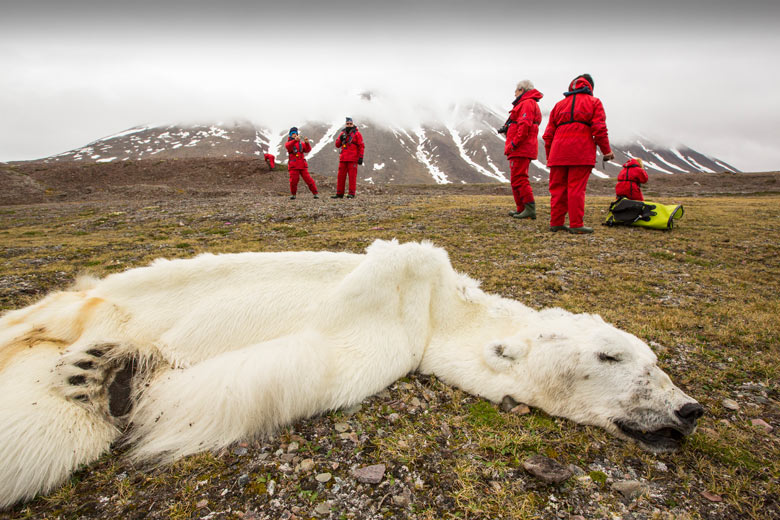From the part of the news world that doesn’t participate in
The Emperor’s Not Naked News Service (ENN) — in this case, from
Reuters
— comes a story of how NSA data is funneled into the DEA (Drug
Enforcement Administration) for use in domestic and international drug
cases.
This includes, apparently, fortuitously timed traffic stops of
suspected dealers — low-enders, in other words, as well as anyone
falsely scooped up in local raids. No evidence of the latter has
emerged, yet, but we sure have evidence of the process and data-path.
This story isn’t just about the NSA and DEA, though. It’s about
all of the agencies that feed data to the DEA, and after the DEA uses it for its own purposes,
all of the places this data then goes.
There’s a funnel in, a collection point (database), and a funnel out.
There’s also systemic lying to conceal the data and the process itself.
Interested? Read on; it’s fascinating..
Who gives data to the DEA?
The DEA has a unit within it, called Special Operations Division
(SOD), that is a distribution point for data generated by other
agencies. The excellent John Shiffman and Kristina Cooke, writing for
Reuters:
A secretive U.S. Drug Enforcement Administration
unit is funneling information from intelligence intercepts, wiretaps,
informants and a massive database of telephone records to authorities across the nation to help them launch criminal investigations of Americans.
… The unit of the DEA that distributes the information is called the Special Operations Division, or SOD. Two
dozen partner agencies comprise the unit, including the FBI, CIA, NSA,
Internal Revenue Service and the Department of Homeland Security. It was created in 1994 to combat Latin American drug cartels and has grown from several dozen employees to several hundred.
So start with that picture. Data pours into the DEA from:
▪ FBI
▪ CIA
▪ NSA (our friends Google and Apple again)
▪ IRS (meaning all your financial data)
▪ Homeland Security
▪ At least 19 other agencies
It then goes into a database called DICE, where it is used by the DEA and anyone else the DEA gives access to it.
Who can use the DEA-collected data?
So “two dozen” federal agencies feed data into the DEA. Who gets that
data? Certainly it’s used internally, as part of the DEA’s direct work.
But there’s also this, via Reuters again:
Today, the SOD offers at least three services to federal, state and local law enforcement agents: coordinating international investigations such as the Bout case; distributing tips from overseas NSA intercepts, informants, foreign law enforcement partners and domestic wiretaps; and circulating tips from a massive database known as DICE.
The DICE database contains about 1 billion records, the senior DEA
officials said. The majority of the records consist of phone log and
Internet data gathered legally by the DEA through subpoenas, arrests and
search warrants nationwide. Records are kept for about a year and then
purged, the DEA officials said.
About 10,000 federal, state and local law enforcement agents have access to the DICE database, records show.
So who is serviced by SOD’s services? In addition to the DEA itself:
“About 10,000 federal, state and local law enforcement agents” [and all of their friends]
In other words, cop friends of the DEA, plus all of their cop
friends, can ask DICE any question they want. (“Hey Fred, you’re in the
Drug Unit. Can you look up … ?”) So cops and their friends.
Corrupt cops, of course (yes, they do exist), could spread DICE data
even wider than that — which now means, cops and all of their non-cop
friends as well. A rather large circle, don’t you think? I suspect some
cops have friends with non-cop axes to grind, and ways to thank cops who
grind them. Surely that number is not zero, right?
By the way, there’s a section in the Reuters article
that declares the DICE database to be “an amazing tool,” then dutifully
reports that the government reports that the government is obeying all
of the rules, even those that have been proven not to exist. Thought you
should know.
How does DEA abuse this database? By lying about its tips and sourcing to judges, prosecutors and defense attorneys
Let’s assume that collecting All Data in the name of “national security” is useful and ethical. How does the DEA then use it?
Part of the way it’s used is to generate tips and leads. (“There’s a
hand-off going down at the warehouse on 9th. The guy with the dope
drives a rusted-out light blue Focus, license 999 9999.”) The DEA agent,
or cop friends of the DEA agent, can then stage a traffic stop (say) of
said vehicle, a luckily timed pull-over and trunk-and-undercarriage
search. (“Lookee here, Fred. I think we stumbled onto something. Good
thing we stopped this guy.”)
Notice that in my pretend dialog above, the DEA source of the tip is
hidden. This is actually standard practice, not just with the
DEA-generated data, but in cop circles in general. Reuters again:
A former federal agent in the northeastern United States
who received such tips from SOD described the process. “You’d be told
only, ‘Be at a certain truck stop at a certain time and look for a
certain vehicle.’ And so we’d alert the state police to find an excuse to stop that vehicle, and then have a drug dog search it,” the agent said. …
After an arrest was made, agents then pretended that their investigation began with the traffic stop, not with the SOD tip, the former agent said. The training document reviewed by Reuters refers to this process as “parallel construction.” … “Parallel
construction is a law enforcement technique we use every day,” one
official said. “It’s decades old, a bedrock concept.”
Got that? DEA gets data from almost everywhere, creates a tip
database, passes the tips (or tips come out via third-party queries),
and once an arrest is made, the source of the tip is
hidden as a matter of course. Why? Because hiding the source of tips is always done.
Yves Smith,
writing about this at Naked Capitalism:
In a weird but more disturbing analogue to chain of title
abuses, where banks would forge signatures and fabricate documents to
remedy the failure to transfer assets properly to securitization trusts,
Reuters reported today that the Drug Enforcement Agency would doctor up
where it got evidence from so it could use it in court. Now why would
the DEA bother to go to all that trouble? Chorus: Because if a decent defense lawyer found out where it came from, it would in most cases be inadmissible.
Of course, Reuters does not know that for a fact, so it can’t say
that. But anyone with an operating brain cell can see through this
practice.
Do you have an operating brain cell? The writers at Reuters are
hoping you do. This is an excellent and exclusive (and explosive)
article, but not everything can be said, and some things that aren’t
likely true must be said (the government’s assertion of the government’s
always-innocence, noted above). That doesn’t mean you can’t connect the
remaining unconnected dots. Go ahead; connect.
Where are the holes in these disclosures?
Yves has cleverly found several more holes in these disclosures. For
example, reread the two quoted paragraphs above that start “Today, the
SOD offers at least three services …”. Smith again:
Do you notice all the caveats? “The SOD offers at least three services”…”the majority of the records consist of phone log and Internet data gathered legally…”
So not only has Reuters uncovered that international information, which
was collected by God only knows what means, is being used domestically,
but the article tacitly admits that only a “majority” or the
information in a ginormous database was gathered permissibly.
See? More dots connected, and all without guessing. According to the article itself,
at least some of the data was gathered illegally, and there are likely
more services — perhaps many more — offered by DEA to friends of DEA, and all of their friends.
Bottom line
Yves Smith has a great bottom line:
It was bad enough when we thought we knew about America’s
star chambers, such as Obama’s position that he could kill any
“suspected terrorist” … Now we learn of even more widespread and
disturbing domestic practices. And this is only the part we’ve been
permitted to see. Just imagine what else goes on.
I too have a takeway — as usual, a view from 10,000 feet above the American emotional landscape.
We long ago became a prosecutorial nation, a nation
of punishers. Not all of us, but enough to swamp the rest. As a nation,
we love us our cops, our prosecutors, our hanging judges. We love us our
Abu Graibs and Gitmo force-feeds and Bradley Mannings chained to the
wall. Dirty Harry and Death Wish Architect (the Charles Bronson
character) are our heroes and protectors. This is everywhere, in low
culture and high — watch Judge Judy sometime, or think of the Jerry
Springer show. The purveyors of punishment are our gods, our daddies,
our agents.
We identify their abuses with our balls and other gonadal parts. In a
complex and perverse way, they make our child parts feel falsely and
vicariously strong, and at the same time, make our frightened baby parts
feel protected and confirmed in the rightness of their fear. It cements
us to our fear. Adoring these men and women, we will never grow up,
never be strong, never be self-reliant, despite the Orwellian
self-reliance fetish-talk that washes through these circles.
The part of this nation that needs all this “security” and
“protection” is the least adult, least strong, most frightened
daddy-seeking population I’ve ever encountered. It’s getting what it
wants, but it’s creating (has created) a world that’s unlivable by those
who don’t share its determined infantilism.
Ultimately, even they won’t want what they’ve
created. After all, the unstoppable predator that eats their enemies
will soon turn elsewhere for food. Sons and daughters of Texas, that’s your sister’s vagina they’re groping;
your mother’s and grandmother’s too. Not mine nor any of my friends’.
The rest of us will avoid you every chance we can. You’re the ones stuck
at home, in the world of your fear come back at you.




 Gryffin
Sanders of Golden, Colorado, was in the car with his younger brother
being driven by their 74-year-old great-grandmother. The car was
traveling at 60 mph when Darlene Nestor passed out!
Gryffin
Sanders of Golden, Colorado, was in the car with his younger brother
being driven by their 74-year-old great-grandmother. The car was
traveling at 60 mph when Darlene Nestor passed out!







 Kent Brewster made some careful notes and analysis of the Atherton, CA
police-blotter, which tells the story of the arrests in one of America's
three most expensive places to live. He found that when it came to
traffic stops, 175 out of 182 drivers had Hispanic surnames.
Kent Brewster made some careful notes and analysis of the Atherton, CA
police-blotter, which tells the story of the arrests in one of America's
three most expensive places to live. He found that when it came to
traffic stops, 175 out of 182 drivers had Hispanic surnames.














